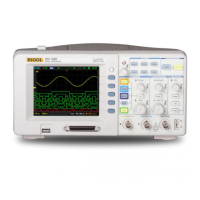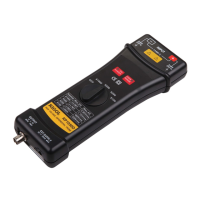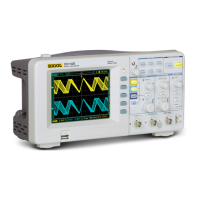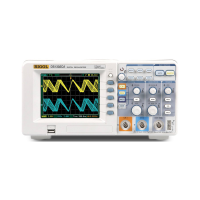Chapter 16 Troubleshooting RIGOL
DS1000Z User’s Guide
Chapter 16 Troubleshooting
The commonly encountered failures and their solutions are listed below. When you
encounter those problems, please solve them following the corresponding steps. If
the problem remains still, please contact RIGOL and provide your device
information (Utility System System Info).
1. The screen is still dark (no display) after power on:
(1) Check if the power is correctly connected.
(2) Check whether the fuse is burned out. If the fuse needs to be changed,
please use the specified fuse.
(3) Restart the instrument after finishing the above inspections.
(4) If it still does not work correctly, please contact RIGOL.
2. The signal is sampled but no waveform of the signal is displayed:
(1) Check if the probe is correctly connected to the oscilloscope and the item
under tested.
(2) Check if there are signals generated from the item under test (you can
connect the probe compensation signal to the problematic channel to
determine which has problems, the channel or the item under test).
(3) Resample the signal.
3. The voltage amplitude measured is greater or lower than the actual
value (note that this failure usually only occurs when probe is used):
Check whether the attenuation coefficient of the channel complies with the
attenuation ratio of the probe.
4. There is waveform display but not stable:
(1) Check the trigger signal source: check whether the Source item at the
trigger panel complies with the signal channel actually used.
(2) Check the trigger type: general signals should use “Edge” trigger and video
signal should use “Video” trigger. Only when the proper trigger type is used,
can the waveform be displayed stably.
(3) Check the trigger level: adjust the trigger level to the middle position of the
signal.
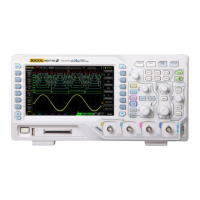
